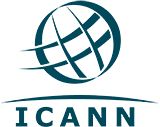Common Mistakes When Creating a Website and How to Avoid Them
The Importance of Good Web Design In today's digital age, having a well-designed website is not just an option, but a necessity for any entrepreneur. A good web design not only attracts visitors but also reflects the professionalism of your business. However, many entrepreneurs make common mistakes when creating their websites, which can negatively impact their online success. In this article, we'll explore some of these mistakes and how to avoid them. Lacking a Clear Objective One of the most common mistakes when creating a website is not defining a clear objective. Before you begin designing, ask yourself: What do I want to achieve with my site? Is it to sell products, generate leads, or simply provide information about my services? Without a clear objective, your site can become confusing and ineffective. How to avoid it: Define your goals from the beginning. Establish a clear purpose for each section of your website and make sure each element contributes to achieving those objectives. Ignoring User Experience User experience (UX) is a crucial factor in web design. If your site visitors have difficulty navigating or finding what they're looking for, they're likely to switch to your competitors. Ignoring UX can lead to high bounce rates and lower conversions. How to avoid it: Conduct usability tests and make sure your site is easy to navigate. Use clear menus, a logical layout, and provide relevant and accessible information. Remember that a website should be intuitive and offer a pleasant user experience. Neglecting SEO SEO (search engine optimization) is essential for your website to be visible online. Many entrepreneurs forget to optimize their content, making it difficult for potential customers to find their site. How to avoid it: Research keywords relevant to your business and include them in your site content, as well as in titles and headings. It's also important to optimize images and use appropriate descriptions. Creating quality content and obtaining backlinks are equally essential to improving your search engine rankings. Not Optimizing for Mobile With an increasing number of users accessing the internet through mobile devices, not optimizing your site for these devices is a big mistake. If your site doesn't display well on smaller screens, you could lose a lot of traffic and potential customers. How to Avoid It: Make sure your site has a responsive design, meaning it automatically adjusts to different screen sizes. Test on multiple mobile devices to ensure optimal navigation and appearance. How to Avoid These Mistakes Creating an effective website requires attention to detail and careful planning. By avoiding the common mistakes mentioned above, you can build a site that not only attracts visitors but also converts them into customers. Always remember to have a clear objective, prioritize user experience, optimize for SEO, and ensure your site is accessible on mobile devices. Avoid these mistakes and create an effective website with our team at CyberGlobalNet! We're here to help you take your online presence to the next level.
Read More






